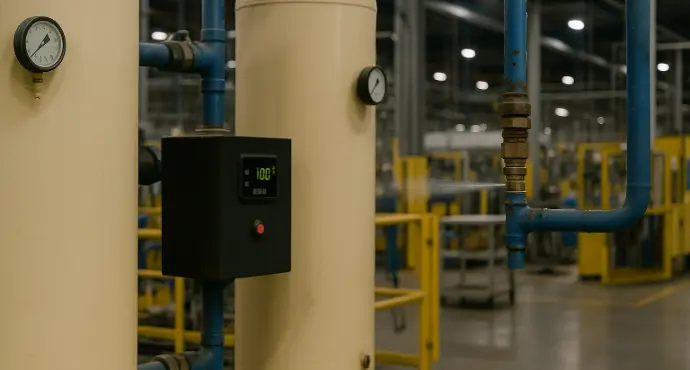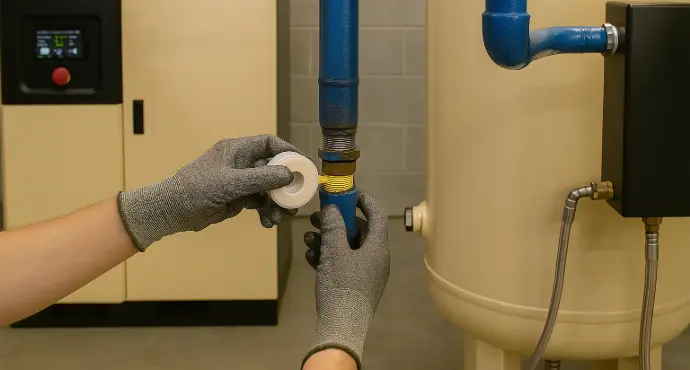1. Key Challenge
The plant faced high operational costs and energy waste due to multiple leaks in its compressed air system. Some of these high-severity leaks caused significant air and energy losses, also generating elevated CO₂ emissions. The lack of an accurate diagnosis hindered decision-making to mitigate the problem and optimize system performance.


2. Implemented Solution
A detailed study was conducted using the remote monitoring system, complemented by ultrasonic technology for leak detection and classification. The analysis identified 89 leaks, of which 22 accounted for 87% of the total waste. Based on these findings, the following recommended actions were implemented:
- Aplicación de teflón en roscas y reemplazo de conectores defectuosos.
- Sustitución de mangueras, líneas y equipos dañados.
- Reajuste de conexiones indicadas sobre las Instalaciones.
3. Results
- Unit Waste: An annual cost associated with consumption was projected, amounting to $45,636 USD.
- Recommendations Table: The intervention produced a table of recommendations to follow for repairing each leak.
- Reducing Environmental Impact: By correcting these leaks, a reduction in CO₂ emissions would be achieved, with estimated decreases ranging from 207 to 237 tons annually.


4. Conclusion
The leak study implemented at the facility demonstrates how the use of advanced technologies and precise diagnostics can transform industrial processes. The applied solution not only enabled substantial economic savings and operational efficiency improvements but also contributed to environmental sustainability. This case clearly shows that investment in monitoring and preventive maintenance is key to optimizing resources and reducing long-term environmental impact.